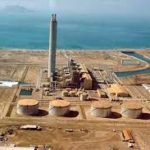 Potential sell-off from Islamic mutual funds (6% of free float), largely due to rising debt financed equity investments has kept a cap on HUBC’s price performance. However, the release of detailed financial accounts indicates HUBC’s conventional debt to asset (33%) comfortably below the levels allowed by Shariah compliance criteria of 37%. Meanwhile, ‘penal income’ at 11% of total revenues may potentially hinder Shariah board in giving a clean chit to the IPP, where HUBC’s management argues the aforementioned ‘non-compliant’ penal income is being derived from rising receivables, which are not within the Company’s control. The upcoming November 2019 Shariah review could be a key check point for HUBC, where revenue growth from US$ indexed income and possible pick-up in fuel costs could bring down penal income’s contribution from current levels. Analysts’ bullish stance on HUBC stems from US$ hedged ROEs on HUBC’s 1,650MW coal power projects translating into 3-year earnings CAGR of 42% (ThalNova Power project not incorporated yet, financial close expected in December 2019). Piecemeal payouts are expected to resume in 2HFY20.
Potential sell-off from Islamic mutual funds (6% of free float), largely due to rising debt financed equity investments has kept a cap on HUBC’s price performance. However, the release of detailed financial accounts indicates HUBC’s conventional debt to asset (33%) comfortably below the levels allowed by Shariah compliance criteria of 37%. Meanwhile, ‘penal income’ at 11% of total revenues may potentially hinder Shariah board in giving a clean chit to the IPP, where HUBC’s management argues the aforementioned ‘non-compliant’ penal income is being derived from rising receivables, which are not within the Company’s control. The upcoming November 2019 Shariah review could be a key check point for HUBC, where revenue growth from US$ indexed income and possible pick-up in fuel costs could bring down penal income’s contribution from current levels. Analysts’ bullish stance on HUBC stems from US$ hedged ROEs on HUBC’s 1,650MW coal power projects translating into 3-year earnings CAGR of 42% (ThalNova Power project not incorporated yet, financial close expected in December 2019). Piecemeal payouts are expected to resume in 2HFY20.